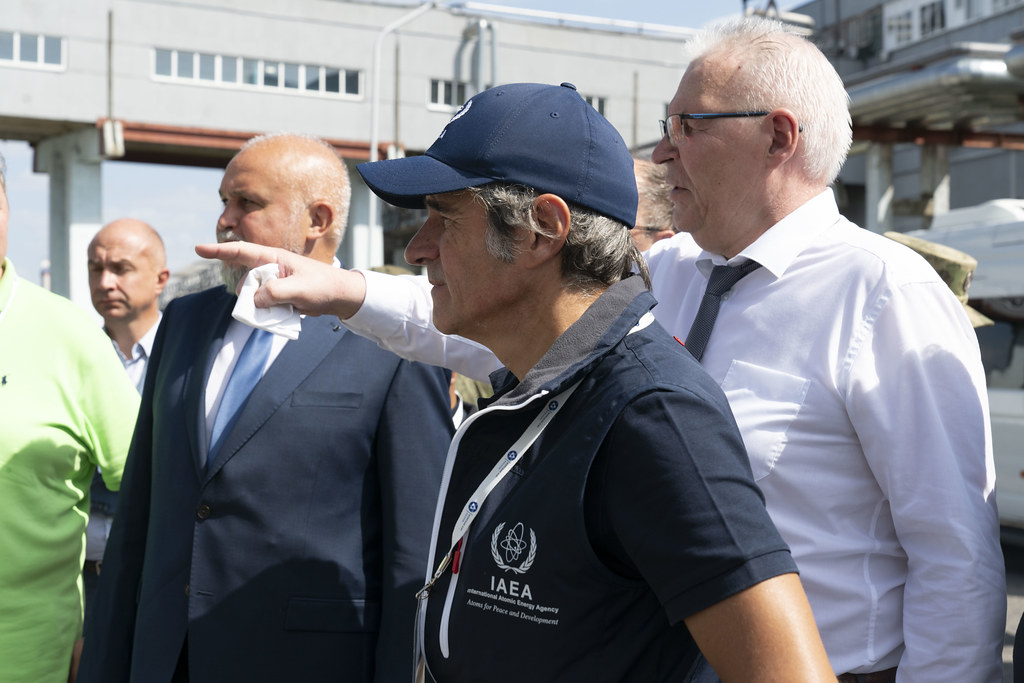The recent visit of the Director General of the International Atomic Energy Agency (IAEA) Rafael Grossi to the Kursk Nuclear Power Plant (NPP) once again highlighted the serious risks of nuclear accident in the context of the ongoing war. On August 27, 2024, Grossi visited the Kursk NPP, located in Kurchatov, where he warned of the possibility of a serious nuclear accident due to military action near the plant. According to him, the situation is critical and requires immediate attention from the international community.
Grossi said that the Kursk NPP was operating very close to normal condition, but was at risk due to the lack of sufficient protection against air attacks. Nuclear reactors are protected only by a roof, which makes the plant vulnerable to shelling, drones and missiles, he noted. He also stressed that using old Soviet reactors, like the one at Chernobyl NPP, increased the risks because it did not have a special protective dome and could easily become a target for attacks.
The situation at the Kursk NPP has raised particular concerns, as Russia continues to conduct military operations irresponsibly near nuclear facilities. Such actions could lead to a nuclear catastrophe that would threaten not only Ukraine, but also all of Europe and the world. Russia has already demonstrated its willingness to use nuclear infrastructure as a tool for blackmail and pressure on the international community by seizing the Chernobyl and Zaporizhzhia NPPs in 2022.
In February 2022, Russian troops temporarily occupied the Chernobyl NPP, which caused international condemnation and serious concerns about nuclear safety. Although the Chernobyl NPP was liberated a few weeks later, the event showed Russia’s willingness to violate international norms and undermine global security. However, despite the liberation of the Chernobyl NPP, the Zaporizhzhia Nuclear Power Plant (ZNPP) is still under Russian occupation. Russia has turned Europe’s largest NPP into a military base, deploying military equipment there and using the plant as a means of pressure on Ukraine and the international community. Against the background of the ongoing occupation of ZNPP, the IAEA has repeatedly expressed concern about the state of nuclear safety at this facility. The Agency has called for the immediate withdrawal of military forces from the plant and the restoration of Ukrainian control over the NPP. However, the Kremlin continues to ignore these calls, using the NPP as an instrument of nuclear blackmail.
During the visit, Grossi emphasized that Ukraine did not threaten to the Kursk NPP, since Kyiv behaved responsible to nuclear and radiation safety. The only real threat is possible Russian provocations, such as blaming Ukraine and manipulating the IAEA to blackmail the world community with a new man-made disaster.
The Kremlin, ignoring the IAEA resolutions and international norms, is conducts a policy of nuclear terrorism, crossing all possible “red lines”. Despite international calls for restraint and to comply with nuclear safety standards, Russia continues to escalate the conflict, putting not only Ukraine but the entire world at risk.
Grossi called for increased international attention to nuclear facilities in conflict zones and for decisive action to prevent further incidents. He expressed hope that the international community would not allow Russia to turn the IAEA into an instrument for its provocations and blackmail.
The situation with the Kursk NPP once again highlights the need for urgent measures to ensure the safety of nuclear facilities and prevent nuclear terrorism from Russia. The world community must increase pressure on the Kremlin to stop its aggressive actions and prevent potential nuclear disasters that could have catastrophic consequences for humanity.

